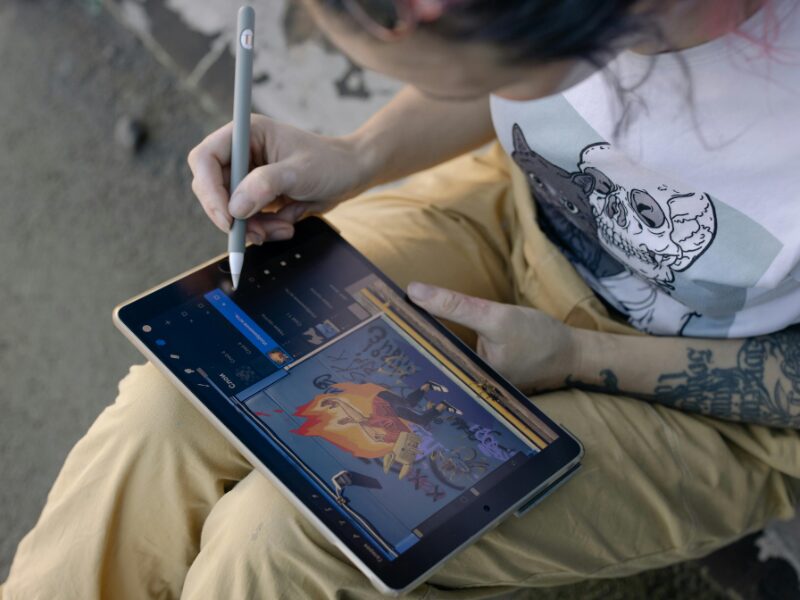A natural reader’s instinct may be to search for fanart on Pinterest or Instagram after finishing a book they really loved. Have you ever thought about the benefits of being given access to fanart before a book’s release? Could it excite readers more and bring on a broader audience? Fanart can be described as the art of pop culture, and not specific to books but relevant to video games, movies, shows, music, etc. Each of these has something in common: entertainment. Through fanart, readers can further explore their love for a novel and build a community with the fanartist, author, and people who feel the same. When someone makes art about a book, they interpret the author’s words and offer it up to other readers to do the same.
Fanart can come from and be discovered in many places, including Instagram, X (formerly Twitter), and Tumblr. It may have been more difficult to come across fanart and get an author’s attention just a few years ago. The popularity of fanartists has increased as genres such as fantasy and romance have made a splash. Of course, readers want to see what a new type of dragon may look like or what the love interest’s haircut is. Some fanartists on Instagram even have a Patreon account where members can pay a small price to get exclusive access to their art. This community continues to build relationships. There is something to be said about the pull of social media and online content in this day and age for authors and digital artists.
There are a few examples I would like to share of fanart being used as a marketing strategy by authors, both well established and new to the industry. First is Amilea Perez, an indie author, publishing her debut novel, The Tournament of Heirs, to be released October 2024. As the weeks leading up to the release go by, Perez posts a character reveal on her Instagram at least once a week. Perez commissions fanartists from Instagram to read an ARC of her novel and generate fanart. From this, she posts sneak peeks into her fantastical characters and world, engaging with readers and getting the audience excited for what is to come.
Second is book subscription boxes, which include fanart in the collections of curios they send to subscribers. I know that, personally, I have collected a handful of art prints that consist of fanart from these boxes. I can even say that two pieces enticed me to read a book simply because of how beautiful and intriguing the art was. Third, authors can use fanart as a preorder incentive. This has also drawn me in. Authors will post on their platforms that if you preorder their book, it will get delivered with goodies such as a bookmark, a pin, and maybe even a piece of art! These three examples showcase how authors use social media and digital fanart to promote their books to readers. If one of your favorite fanartists posts something that intrigues you, imagine the power that could come with an author commissioning that same artist.
You may notice me using the term “fanartist” a bit. Each time I type it, a grim red line comes up. I use this term because I noticed that when I come across fanart on platforms such as Instagram, X, and TikTok, this is a hashtag and term used by people in the community producing fanart. Other keywords may be character illustration, character art, fanart, digital art, and digital drawing. This distinction emphasizes the presence of fanart and digital artists online. With the growth of the field, authors can use it to their advantage for promotional activity. The digital art starts online and can grow to reach the reader’s physical hands. But, at the heart of it all, is the digital fanbase and the use of online platforms. The author and artist’s reader relationship is strengthened by digital marketing and online interaction, and fanart is one demonstration of that.
Source: @amilea.writes on Instagram.
Fact: Her “character reveal” posts, tagged with online fanartists.

